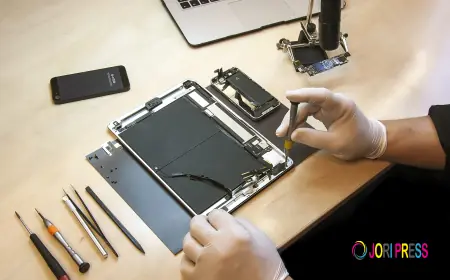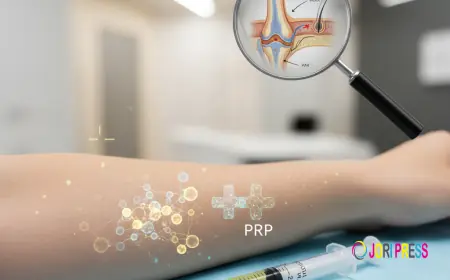Does Laser for Hair Removal Replace Shaving Fully?

Hair removal has always been an essential part of personal grooming, with shaving being the most common method used by both men and women. However, advancements in cosmetic dermatology have introduced more effective and lasting solutions. One of the most popular options today is Laser Hair Removal Treatment in Islamabad , which has gained attention for its ability to reduce unwanted hair and minimize the need for frequent shaving. But the question many people ask is: can laser treatment completely replace shaving? Let’s explore this in detail.
Understanding Shaving and Its Limitations
Shaving is quick, easy, and inexpensive, which is why it remains a go-to choice for millions. However, it only cuts the hair at the surface level, which means hair grows back within a few days. Some common downsides of shaving include:
-
Frequent regrowth: Hair typically returns in 1–3 days.
-
Skin irritation: Many people experience razor burns, cuts, and redness.
-
Ingrown hairs: Shaving can sometimes cause painful bumps due to ingrown hairs.
-
Time-consuming: Regular shaving can feel like a never-ending cycle.
These challenges make people search for a longer-lasting solution, leading them toward laser treatments.
What Is Laser Hair Removal?
Laser hair removal is a cosmetic procedure that uses concentrated light beams to target and damage hair follicles. By weakening the follicle, future hair growth becomes significantly slower and lighter. After multiple sessions, many patients notice permanent reduction in hair growth, offering them smoother skin for a longer period compared to shaving.
Can Laser Hair Removal Fully Replace Shaving?
The short answer is: laser hair removal can drastically reduce the need for shaving, but it may not completely replace it in every case. Here’s why:
-
Significant reduction in hair growth: Most patients experience up to 80–90% permanent hair reduction.
-
Finer regrowth: The hair that does return is often softer, lighter, and less noticeable.
-
Occasional touch-ups: Some people may still need minor shaving for stray hairs, but the frequency is drastically reduced.
So while laser treatment makes shaving almost unnecessary for many, it might not guarantee absolute elimination of hair for everyone.
Comparing Laser Hair Removal vs. Shaving
Longevity of Results
-
Shaving: Lasts only a few days.
-
Laser: Results can last for months or years with occasional maintenance sessions.
Skin Health
-
Shaving: Can cause irritation, razor bumps, and cuts.
-
Laser: Provides smoother skin without irritation, especially after multiple sessions.
Convenience
-
Shaving: Requires frequent upkeep.
-
Laser: A series of sessions leads to long-lasting freedom from daily hair removal.
Hair Texture
-
Shaving: Hair regrows with blunt ends, often feeling coarse.
-
Laser: Regrowth is lighter and thinner, sometimes barely noticeable.
Who Benefits the Most from Laser Hair Removal?
Laser treatment is effective for many people, but results may vary based on individual factors such as:
-
Skin tone and hair color: Works best on people with lighter skin and darker hair due to the contrast. However, new technologies are improving results for different skin tones.
-
Treatment area: Common areas include legs, underarms, face, and bikini line, all of which respond well.
-
Consistency of sessions: Regular treatments maximize long-term effectiveness.
Myths About Laser Replacing Shaving
“Laser removes 100% of hair permanently.”
Fact: While it offers permanent reduction, complete elimination may not always occur. A few fine hairs might remain.
“You will never need to shave again.”
Fact: Laser drastically reduces the need, but occasional shaving or touch-ups may still be required.
“Results show after one session.”
Fact: Multiple sessions are needed to target hair in different growth cycles. Most people notice visible results after 4–6 treatments.
Advantages of Choosing Laser Over Shaving
-
Time-saving: No more daily or weekly shaving routines.
-
Confidence boost: Smooth skin without the worry of stubble.
-
Long-term savings: Although the upfront investment is higher, it saves money in the long run compared to buying razors, creams, and aftershaves.
-
Improved skin texture: No razor burns, cuts, or bumps.
When Might Shaving Still Be Necessary?
Despite the effectiveness of laser hair removal, shaving may still play a small role:
-
Before laser sessions: Doctors often recommend shaving the treatment area 24 hours before a session.
-
Touch-ups between treatments: During the treatment course, some hair might still appear temporarily.
-
For very fine or light-colored hair: Laser may not fully target light, red, or grey hairs, so shaving could still be needed occasionally.
Conclusion
Laser hair removal is a game-changer in the world of grooming and personal care. It significantly reduces hair growth, leaving skin smoother for longer and cutting down the need for frequent shaving. While it may not always replace shaving completely, for most people, it makes shaving an occasional rather than a daily task.
What's Your Reaction?
 Like
0
Like
0
 Dislike
0
Dislike
0
 Love
0
Love
0
 Funny
0
Funny
0
 Angry
0
Angry
0
 Sad
0
Sad
0
 Wow
0
Wow
0




















































